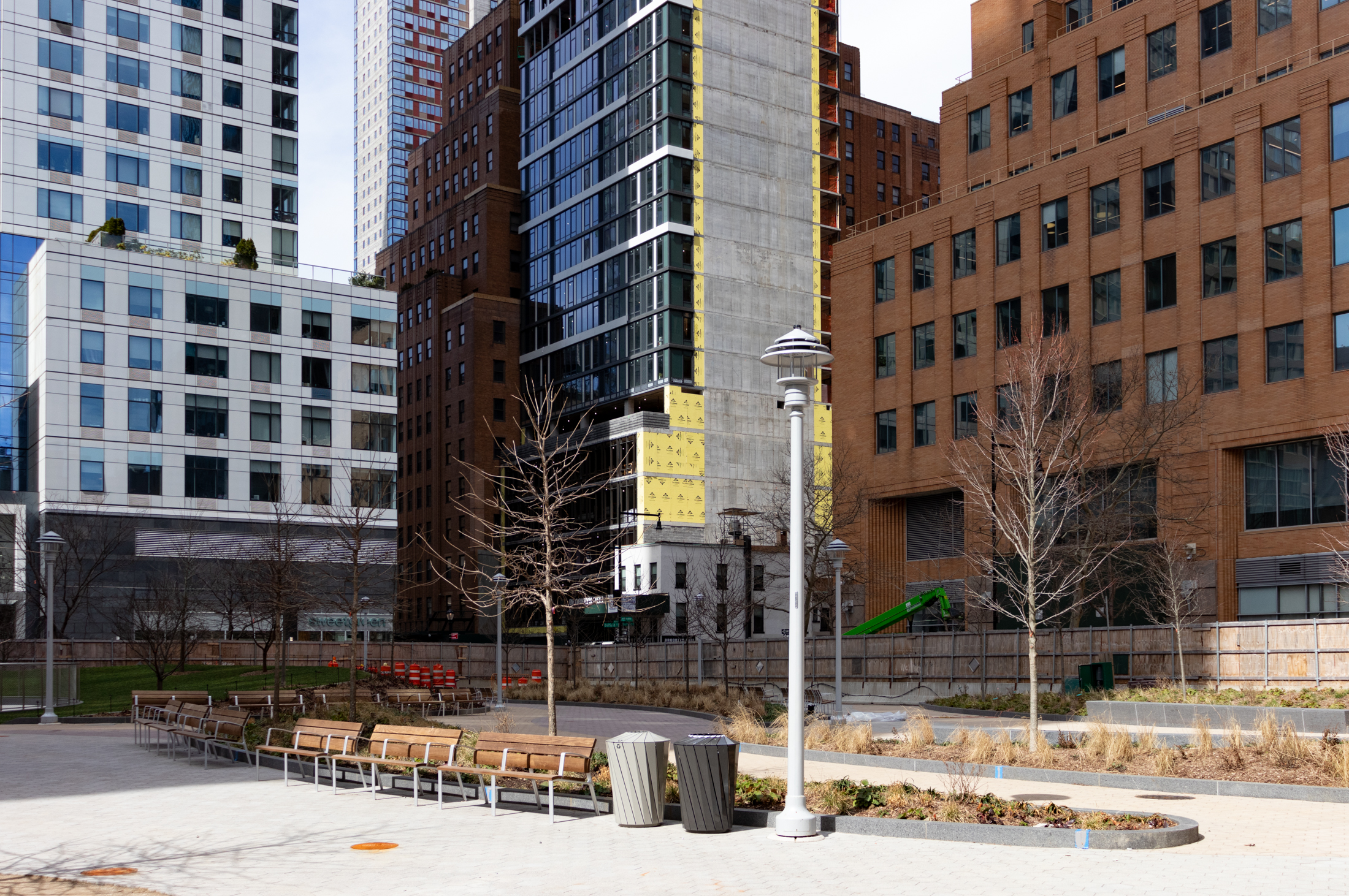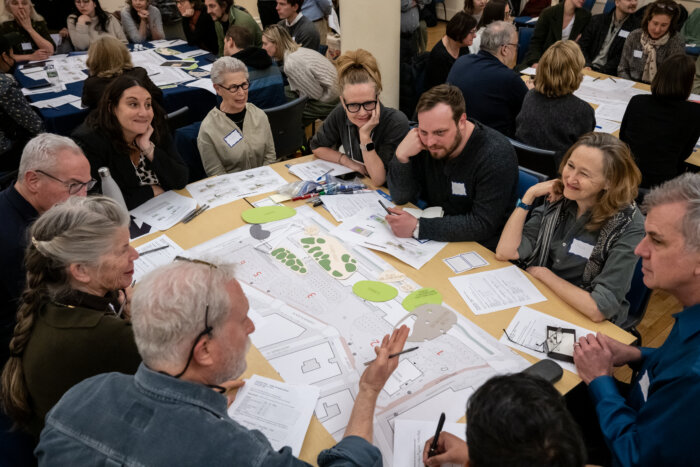Brooklyn Paper: Taxpayers Paying Up for Downtown Rental
It’s hardly breaking news, but The Brooklyn Paper has a story this week about Forest City Ratner Companies receiving $109.5 million in tax-exempt bonds and $27.5 million in taxable bonds issued by the New York State Housing Finance Agency for the 335,000-square-foot building under way at 80 DeKalb Ave. According to The Brooklyn Paper, critics…

It’s hardly breaking news, but The Brooklyn Paper has a story this week about Forest City Ratner Companies receiving $109.5 million in tax-exempt bonds and $27.5 million in taxable bonds issued by the New York State Housing Finance Agency for the 335,000-square-foot building under way at 80 DeKalb Ave. According to The Brooklyn Paper, critics say that this translates into tax payers underwriting each affordable unit to the tune of $1.5 million. Wachovia Bank and Helaba provided “credit enhancement” to the $137 million in bonds. The 34-story tower, Ratner’s first residential building in Brooklyn, was designed by Costas Kondylis. It’s an 80/20 unit with 292 market-rate rental units and 73 affordable ones, that will remain so for 99 years. The building is to be green—they expect to achieve LEED certification—and could begin leasing next summer.
Ratner’s First Tenants [The Brooklyn Paper]
New Glassy Tower to Join Fort Greene Mini-City [NY Observer]
Development Watch: 80 Dekalb Avenue [Brownstoner] GMAP P*Shark DOB
80 Dekalb Avenue: Get Ready for Take-Off [Brownstoner]
Public Hearing Scheduled for 80 Dekalb Financing [Brownstoner]
Demo Done at Site of Ratner’s Dekalb Tower [Brownstoner]
At 80 Dekalb, No Mention of Ratner [Brownstoner]
Ratner: ‘Fort Greene, I’ve Got You Surrounded’ [Brownstoner]








i wish he was still around to tell us. i miss him.
BrooklynLove, what would Ol’ Dirty say about Atlantic Yards?
i’m refering to the usual suspects on this blog who scream bloody murder that tax payers are putting up 2 bill for AY. bunch of crapola.
AY is getting subsidized in many different ways – some of them are legit and some are shameful. The tax-exempt bond financing is legit. The bargain basement price from the MTA is shameful. And while I have my own other problems with AY (closing of the block of Pacific between Carlton and Vanderbilt to create a superblock, the lack of open space, etc) I actually think that it’s not an awful location to put an rean – it’s got the best mass transit access of any location in the borough – which is really the main consideration when choosing an arena location.
ANd I don’t think your $115,000 salary number for affordable housing is correct.
It’s oversimplification to think anti-AY people are only upset over tax revenue. It has to do with scale, lack of proper procedure, putting the arena in an awful location, the threat of eminent domain, the bargain basement price Ratner got for the air rights from the MTA…I could go on. When you add the fact that either way- with or without AY- we aren’t going to see any tax revenue, why should taxpayers care about AY?
Also remember that the income levels set for affordable housing include people making 100,000 (115,000 comes to mind?) a year. Sorry but at that income level you shouldn’t be subsidized. And finally while Ratner promises to build affordable housing he has a loophole allowing him to build it off site. If in fact he builds it at all. Developers have a track record of unfulfilled promises. All in all the bs on the Ratner side.
“but my main point is that the notion that dollars that come out of our paychecks are going directly to FCR for this project and others like it is incorrect. you need carrots like the interest savings in order to compel companies like FCR to build the low-income housing. otherwise they just wouldn’t.”
and it’s not just low-income housing. this is precisely why all the anti-AY BS is so retarded. people screaming about the tax revenue they’re foregoing in the AY financing. how much tax revenue are the tax payers seeing now from that land? nada. how much would they see w/o any developer incentives? nada.
thanks to you MMHPH,and Friend or Foe, it does. It’s so complicated I can’t make heads or tail of the whole subject and of course when you see a sentence like ” critics say that this translates into tax payers underwriting each affordable unit to the tune of $1.5 million” my first instinct is to choke a politician. But seeing it in context makes it a whole other story and I thank you both for taking the time to write it out.
bxgirl – to answer your question: yes the tax exempt funds subsidize the whole project, not just the affordable units. However, in the world of people who try to get affordable housing built, the question is always “how much subsidy to we have to provide in order to get affordable units built?” so in order to compare different affordable housing programs to eachother, they typically use the metric of “subsidy dollars per affordable unit”. Obvioulsy the goal is to figure out a way to get the most affodable units for the least amount of subisdy. Some programs are more “efficient” with their subsidy dollars than others. As fsrq was not very delicately pointing out – the 80/20 program is much more efficient than a program that would require the gov’t to actually build these units themselves.
Anyway, the term is not meant to imply that the market rate units aren’t subsidized. I hope that clears that up.
i second P heights. they definitely make more dough by participating in the 80/20 program. i’m talking about a project’s cash flow. they have to otherwise they wouldn’t deal with HDC and HFA. in the old 421-a program, if they just built the project without the affordable they would get a 15 yr abatement. with the affordable they get 25 yr. that’s extra dough in their pocket for another 10 yrs. that was the icing on the cake.
but we’ll see how it plays out now that the 421-a is totally different. everybody is going to be looking at doing 80/20’s and unfortunately despite the passage of the latest federal housing bill, there’s not that much of the bonds to go around.